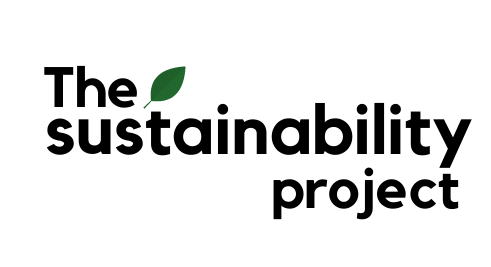Did you know that within the next minute, there will be about 694,000 hours worth of videos streamed on Youtube, 65,000 photos shared on Instagram, and 167,000,000 videos watched on Tiktok? Huge numbers for just a tiny portion of life on the Internet, right?
Good thing it’s all digital! On what seems to be the bright side, we don’t need to worry about the potential wastage and environmental impact if these numbers translated to tons of ink, paper, and film reels. Or do we, somehow?
Not so long ago, there was a bit of a stir when media articles reported claims such as the sending of one short email releases 4 grams of CO2 into the air (50g if with an attachment, on average).
In addition, in United Kingdom, if every person sent one less email a day, the online carbon footprint reduction would be equivalent to around 80,000 flights to Madrid. Now combining the figures from earlier with this alleged environmental damage, you might be quite alarmed.
Fortunately, it turned out that these reports were based on outdated studies, mostly from a book that was published by Mike Berners-Lee, a carbon footprinting expert, in 2010 (which is eons ago, in this Computer Age).
Since then, there have been several changes in the infrastructures that run email services, making them much more energy efficient. The thousands of emails sitting in your inbox are likely not boosting your online carbon footprint while you try your best to stick to a sustainable lifestyle. But this should get you thinking: is your digital activity not purely free of environmental guilt?
Where Your Online Carbon Footprint Comes From
The environmental impact of all our online habits mostly stems from the basic fact that smartphones and computers need electricity to run. And electricity, for the most part, means greenhouse gas emissions.
But the actual cost is a lot more than what we encounter directly when we plug our personal devices into wall sockets.
– First, there is the whole process of manufacturing the actual machines or hardware.
– Secondly, there is so much energy required to power the servers housed in data centres where all digital content is stored, and computations are processed.
– Lastly, we also have to include the power needed by the network infrastructure that keeps us connected.
And if we want to be comprehensive in our accounting, we can also consider the overhead and operating costs of the tech company we support, i.e. the organizations that run the apps and websites that we use.
How Harmful Could Your Online Activities Actually Be?
All of the different things we do on the Internet vary in terms of environmental cost. For instance, sending an instant message does not consume as much resources as streaming a movie. The tricky part in measuring carbon footprint is that it depends on several factors, like the type of device, the media resolution, and the type of network used.
Ericsson, one of the world’s leading network and telecommunications providers, published a report in 2019 highlighting “direct carbon emissions associated with Information and Communications Technology (ICT) manufacturing, use and disposal”.
Below are some sample figures from the report, comparing it with common household activities outside the sector.
| Activity | Device | Overall electricity consumption in kWh (considering network and data centers) | |
| Common ICT usage | Downloading 1 song | Smartphone | 0.001 |
| Watching streamed video for 2 hours | Smartphone | 0.04 | |
| Laptop | 0.09 | ||
| TV | 0.2 | ||
| Internet surfing for 5 minutes | Smartphone | 0.001 | |
| Tablet | 0.002 | ||
| Other activities | Boiling 1 liter of water | Electric kettle | 0.1 |
| Driving for 1 km | Electric car | 0.15 | |
| Petrol car (fuel) | 0.7 | ||
| 2 hours of light | LED bulb | 0.01 |
Electricity consumption of common ICT and other activities as reported by Ericsson in 2019
To give you a gist of your online carbon footprint in the context of your daily lifestyle, Ericsson states that “one year’s smartphone usage (full life cycle including the share of networks and data centers) is comparable to the level of fuel combusted driving for 2 hours on the motorway (not including manufacturing of car or infrastructure).”
Moreover, there is a significant reduction in total electricity consumption when comparing today’s platforms to older media, such as video streaming versus the DVD or Blu-ray industry and storing files in the cloud versus in personal hard drives.
So it turns out our usual online carbon footprint is not so frightening. However, newer developments like machine learning, artificial intelligence and blockchain technology are of concern because they thrive on massive amounts of data and computation.
Bitcoin mining alone, for example, “accounted for 0.2 percent of global electricity usage in mid-2018.” NFTs, or non-fungible tokens (unique digital assets stored using blockchain technology), which grew in popularity earlier this year as a way to buy and sell digital artwork, faces heavy criticism due to its high energy use.
Based on recent calculations, an average single NFT transaction “has a carbon footprint of about 48kg CO2“. Still, it is a challenge to thoroughly calculate these emissions since the contributing factors change quickly. What we do know for certain is that they require significantly larger amounts of power to run, so we must be watchful as these technologies rise in ubiquity.
The Flip Side
As people who chose the sustainable lifestyle, we owe a significant part of our advocacy to technology. It allows awareness to spread faster than ever, enables efficient information sharing, and has given us digital alternatives to material things that would’ve otherwise cost the environment more to produce.

The benefit of digitalization is not only applicable in our direct efforts to promote sustainable living. In general, technology has provided more environmentally friendly substitutes to numerous individual and organizational activities. Paperless billing, online meetings instead of having to travel, and the decrease of physical album production in favor of digital music are just a few examples.
Additionally, we have modern technology to thank for optimizing several processes around the world, from traffic flow and public transportation to business operations. With the help of computers, artificial intelligence and machine learning, humans have been able to improve in both energy efficiency and productivity.
This proves how complicated it is to talk about our use of digital tools and its impact on climate change. There are countless questions to ask if we are to quantify the positive and negative effects. Additionally, technologies evolve at a strikingly rapid pace– even if we agree on a conclusion now, we could come up with new arguments after a couple of months.
But you know what’s great about this evolution?
The technology industry is also growing more aware of its environmental impact. The major companies, at least, have started taking active steps to “go green”. We have realized how powerful technology is and how it must be properly utilized to accelerate the world toward sustainability, instead of farther from it.
Tech Companies’ Role In Limiting Online Carbon Footprint
Most of the green initiatives taken by tech companies with their commitment to sustainability fall into four categories:
RECs or Renewable Energy Certificates
As defined by ENGIE, “a REC is a market-based instrument that represents the rights to the environmental attributes of renewable energy generation.”
Basically, companies purchase the rights to electricity generated from renewable sources, represented by one megawatt hour (MWh) of energy. This means they can claim low or “zero” carbon emissions if they purchase the equivalent amount of RECs for each consumed MWh coming from non-renewable energy sources.10
Carbon Offsets
Measured in CO2 or CO2 equivalent, carbon offsets refer to projects that lower, avoid or reduce greenhouse gas emissions.
Forestry & conservation efforts and waste-to-energy projects are typical examples of these. By investing in carbon offsets, companies support emissions reduction activities, and ultimately help lower the costs of running such projects.
Optimizing their product or service to be more energy-efficient
Improving their own product to consume fewer resources when stored or transmitted is something a technology company must always strive for.
This normally translates to smaller file sizes and faster load times, and are thus ideal for both the provider and consumer.
Optimizing their supply chain for reduced emissions
This can be done by applying new protocols in their procurement process or encouraging current suppliers to reduce their emissions. For companies dealing with hardware, this can also mean implementing a circular economy for their products.
Key players in the ICT sector, such as Google, Microsoft, Apple, and Amazon, have pledged to focus on sustainability and achieve carbon neutrality by 2030 (2040 for Amazon). The claims have been questioned for sure, especially about the likelihood of their claims merely being “greenwashing” techniques.
Still, by presenting such tall ambitions, companies demonstrate a sense of accountability for the environmental impacts of their businesses and hopefully drive others to follow suit.
What Does It Take To Be A Green Tech Consumer?
As companies take action better for the environment, we too have a role as consumers to contribute in our own ways.
Here are a few suggestions:
Revise Our Online Habits
Even if the myth surrounding our email inboxes’ greenhouse gas emissions has been debunked, it won’t hurt to revise our online habits.
For example, stream in lower resolution, and avoid leaving videos or movies playing without anyone around. These activities still translate to less energy spent somewhere, thus a reduction in overall online carbon footprint.
Take Care Of Our Gadgets
You don’t need to replace your electronic gadget every two years or when a new model comes out!
And when there is a real need to replace, take advantage of buyback schemes; you contribute to recycling efforts by doing this. Keep in mind that devices account for most of the carbon emissions of the ICT sector.
Support Technology Companies That Are Conscious And Transparent
Be aware of “greenwashing,” as it is easy to claim being a carbon-neutral company through only carbon offsets. A company may advertise about their reforestation initiatives, yet continuously consume high amounts of non-renewable energy
Be Informed
Keep yourself informed about the environmental effects of the technologies you use and those that are to come. This can be done by researching before you jump into the next app or website hype. You don’t want to make the same mistake as artist Joanie Lamercier, who made a monumental NFT art sale only to be horrified by its environmental impact afterwards.
Sharing Is Caring
Share about what you know! The impacts of technology on climate change is not often talked about. Encourage your community and if possible, your local government, to demand technologies to be more sustainable.
Right now, the impact of technology on climate change is still a debatable topic, albeit hardly discussed. But with major information and technology companies setting targets to be carbon neutral in the near future (and hopefully all others following suit), and with us consumers being wiser with our digital habits, we can hope to live in a world where technology serves to protect the Earth without any harmful byproduct.



